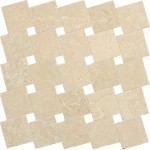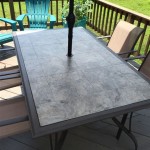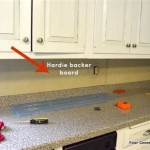Can You Lay Vinyl On Top of Ceramic Tiles? A Comprehensive Guide
The question of whether vinyl flooring can be installed directly over existing ceramic tiles is a common one in home renovation projects. The short answer is: yes, it is possible. However, successful execution requires careful planning, preparation, and consideration of several crucial factors. Neglecting these aspects can lead to aesthetic imperfections, functional problems, and ultimately, the need for premature replacement.
This discussion will delve into the various considerations and best practices for installing vinyl flooring over ceramic tiles. It will cover the types of vinyl suitable for such installations, the necessary preparatory steps to ensure a smooth and durable surface, and potential issues that may arise, along with strategies for mitigating them.
Vinyl flooring offers numerous advantages, including its affordability, water resistance, ease of maintenance, and wide variety of styles and designs. These qualities make it an attractive option for homeowners looking to update their floors without the extensive demolition and reconstruction typically associated with tile removal. However, simply laying vinyl over tile without proper preparation can yield unsatisfactory results.
Key Point 1: Assessing the Suitability of Existing Tile for Vinyl Installation
Before proceeding with any installation, a thorough assessment of the existing ceramic tile floor is paramount. Several factors influence whether the tile is a suitable base for vinyl flooring.
The first consideration is the condition of the tiles themselves. Are they securely adhered to the subfloor? Loose, cracked, or damaged tiles must be addressed before any vinyl installation can commence. Loose tiles will create voids beneath the vinyl, leading to unevenness, potential cracking of the vinyl, and an overall unstable floor. Cracked tiles can telegraph through the vinyl, resulting in visible imperfections and compromised structural integrity. These issues require either repair or replacement before moving forward.
Another crucial factor is the flatness of the existing tile floor. Vinyl flooring, particularly thinner varieties like sheet vinyl, will conform to the underlying surface. Any significant variations in height or depressions in the grout lines will be visible through the vinyl. The flatter the underlying surface, the better the final appearance and performance of the vinyl floor. A level should be used to identify any significant dips or rises, and these irregularities must be addressed through leveling compounds or other corrective measures. Small variations may be masked by thicker vinyl options, but larger imperfections will inevitably show through.
Grout lines present another potential challenge. The depth and width of grout lines can become visible through the vinyl, creating an undesirable texture. While thicker vinyl options can help to minimize this effect, the best practice is to fill the grout lines with a cement-based leveling compound to create a perfectly smooth and seamless surface. This step is crucial for achieving a professional and aesthetically pleasing finish.
Finally, consider the type of ceramic tile. Some tile surfaces may have a textured or highly polished finish that can affect the adhesion of the vinyl flooring. A smooth, clean, and properly prepared tile surface is essential for optimal vinyl adhesion. It may be necessary to roughen up very smooth tile surfaces slightly to create a better bond. Proper cleaning and degreasing are also important to remove any residues that could interfere with adhesion.
Key Point 2: Preparing the Ceramic Tile Surface for Vinyl Installation
Assuming the existing ceramic tile floor is deemed suitable, the next step involves meticulous preparation. This stage is arguably the most critical for achieving a successful and long-lasting vinyl installation.
The first step is thorough cleaning. The tile floor needs to be completely free of dirt, dust, grease, wax, and any other contaminants. A heavy-duty cleaner and scrub brush should be used to remove any surface buildup. Pay particular attention to grout lines, as they tend to accumulate dirt and grime. After cleaning, rinse the floor thoroughly with clean water to remove any remaining cleaning solution. Allow the floor to dry completely before proceeding.
Next, address any loose or damaged tiles. Loose tiles should be carefully pried up, and the underlying subfloor should be inspected for damage. If the subfloor is damaged, repair it before reinstalling the tile. Use a high-quality thin-set mortar to re-secure the tiles, ensuring they are flush with the surrounding tiles. Cracked or severely damaged tiles should be replaced with new tiles of the same size and thickness. If matching tiles are unavailable, consider using a suitable filler to level the area before installing the vinyl.
As previously mentioned, filling grout lines is crucial for a smooth and seamless vinyl floor. Use a cement-based leveling compound specifically designed for filling grout lines. Apply the compound according to the manufacturer's instructions, ensuring it fills the grout lines completely and is flush with the tile surface. Several applications may be necessary to achieve a perfectly level surface. Allow the compound to dry and cure completely before proceeding. After the leveling compound has dried, sand the surface lightly to remove any imperfections and ensure a smooth transition between the tiles and the filled grout lines.
Once the grout lines are filled and sanded, apply a primer or bonding agent to the tile surface. This helps to promote adhesion between the tile and the vinyl flooring adhesive. Choose a primer specifically designed for use with vinyl flooring and apply it according to the manufacturer's instructions. Allow the primer to dry completely before moving on to the vinyl installation.
Finally, inspect the prepared surface carefully for any remaining imperfections. Address any remaining unevenness, dips, or rises before proceeding. The goal is to create a smooth, clean, and level surface that will provide a solid foundation for the vinyl flooring.
Key Point 3: Selecting the Appropriate Vinyl Flooring and Installation Method
Choosing the right type of vinyl flooring and the appropriate installation method is essential for a successful project. Several factors influence this decision, including the intended use of the space, the desired aesthetic, and the amount of foot traffic the floor will endure.
Sheet vinyl, luxury vinyl tile (LVT), and luxury vinyl plank (LVP) are the most common types of vinyl flooring. Sheet vinyl is typically the least expensive option and comes in large rolls, minimizing seams. It is a good choice for areas where water resistance is a primary concern, such as bathrooms and kitchens. However, sheet vinyl is often thinner than other options, making it more susceptible to telegraphing imperfections from the underlying tile surface. Therefore, meticulous surface preparation is even more critical when using sheet vinyl over tile.
LVT and LVP are available in individual tiles or planks, offering greater design flexibility and a more realistic appearance. These options are typically thicker than sheet vinyl, providing better durability and concealing minor imperfections in the underlying surface. LVT and LVP are available in a variety of styles, including those that mimic the look of wood, stone, and ceramic tile. They are a good choice for living rooms, bedrooms, and kitchens.
The installation method depends on the type of vinyl flooring chosen and the manufacturer's recommendations. Some vinyl flooring products are designed for loose-lay installation, meaning they are not glued to the underlying surface. These products typically have a thicker construction and a specialized backing that provides stability and prevents slippage. Loose-lay vinyl flooring is a good option for temporary installations or for areas where access to the subfloor is required. However, it may not be suitable for areas with heavy foot traffic or moisture exposure.
Other vinyl flooring products require adhesive for installation. The type of adhesive used will depend on the specific vinyl flooring and the subfloor material. Use a high-quality adhesive specifically designed for use with vinyl flooring and ceramic tile. Apply the adhesive according to the manufacturer's instructions, using a notched trowel to ensure even coverage. Press the vinyl flooring firmly into the adhesive, working from the center outward to eliminate air pockets. Use a roller to compact the vinyl and ensure proper adhesion.
For click-lock vinyl flooring (often LVT or LVP), planks or tiles interlock with each other, creating a floating floor. This method doesn't usually involve adhesives, making it easier for DIY installation. However, the same preparation rules apply; the tile surface needs to be as level as possible. A slight underlayment can sometimes offer cushioning and help minimize minor imperfections. It's vital to follow the manufacturer's instructions for click-lock systems specific to your selected product.
Regardless of the installation method chosen, it is essential to follow the manufacturer's instructions carefully. Failure to do so can result in poor adhesion, bubbling, and other problems that can compromise the appearance and performance of the vinyl floor.
In summary, while laying vinyl over ceramic tile is a viable option, success hinges on a thorough assessment of the existing tile, meticulous surface preparation, and the selection of appropriate materials and installation methods. Taking the time to address these factors will ultimately result in a beautiful and durable vinyl floor that will provide years of enjoyment.

Installing Luxury Vinyl Over Existing Tiles Choices Flooring

How To Lay Vinyl Flooring Sheet Over Tiles

Can You Put Lvp Over Tile Wc Supply Whole Cabinet

What Type Of Flooring Can You Install Over Ceramic Tile

How To Install Vinyl Or Laminate Flooring Over Existing Ceramic Tile

Can I Lay Premium Vinyl Flooring Over A Tile Floor Hometalk

Can You Put Vinyl Flooring Over Tile A Complete Guide Teka

Vinyl Plank Flooring Over Tile Should I Do This

Can You Lay Vinyl Flooring Over Tile Mersey

New Vinyl Plank Flooring Over Tile Table And Hearth
Related Posts







